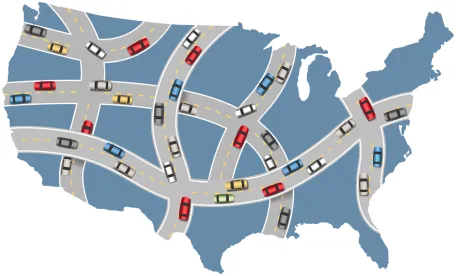With partisanship at a fever pitch, one area of agreement between both parties on Capitol Hill and with President Trump has been the need to address the increasingly fragile state of the nation’s infrastructure. However, as summer marches on and with Congress’s annual August recess taking lawmakers away from Washington for five weeks – the window of opportunity is, once again, closing as attention is diverted to other matters such as the President’s trade agenda and annual appropriations bills. Further, the 2020 election will be underway in earnest in the next few months, and conventional wisdom is that any significant legislative effort like an infrastructure package needs to happen before we are in the throes of an election cycle.
President Trump invited House Speaker Pelosi (D-CA) and Senate Majority Leader Schumer (D-NY) to the White House for talks on infrastructure in late April where they agreed to a $2 trillion infrastructure plan. With some arguing that this amount was insufficient to address the pressing needs of modernizing the nation’s infrastructure, the plan has stalled as there was no agreement on how to pay for it. Further, the President indicated that he was unwilling to work with Democrats as long as they were using congressional committee oversight to investigate him. As we all know, those investigations have continued apace.
With all of that said, while we may not see an “infrastructure package” anytime soon, we do expect to see movement on Capitol Hill on infrastructure-related measures such as the surface transportation and Water Resources Development Act (WRDA) reauthorizations.
The current surface transportation bill, the Fixing America’s Surface Transportation (FAST) Act of 2015, is set to expire on September 30, 2020. The work of reauthorizing the FAST Act is already underway, with the Senate Environment and Public Works (EPW) Committee unanimously approving their reauthorization bill, the America’s Transportation Infrastructure Act of 2019, before departing for the August recess. According to the committee, the bill is the largest highway reauthorization legislation in history, authorizing $287 billion from the Highway Trust Fund over five years. Highlights of the bill include:
-
Funding of $5.5 billion over five years for the Nationally Significant Freight and Highway Projects program, $6 billion over five years for new competitive grants for bridges, $500 million annually for new safety incentive programs, and $250 million over five years for a new grant program designed to reduce wildlife-vehicle collisions.
-
Further, the bill provides $2.9 billion for the Tribal Transportation Program and $2.1 billion for the Federal Lands Transportation Program over five years.
-
With regard to environmental protection and emissions reduction, the bill would invest $4.9 billion over five years in a new resiliency program to protect roads and bridges from natural disasters, $3 billion over five years for the states to support projects aimed at lowering highway-related carbon emissions, and $1 billion over five years in competitive grants for alternative fuel infrastructure.
-
The bill also reauthorizes the Diesel Emissions Reduction Act (DERA)program, which supports the reduction of emissions from diesel engines, and the Utilizing Significant Emissions with Innovative Technologies (USE IT) Act to support carbon capture, utilization, and sequestration research.
Senate EPW is, of course, just one of several Senate committees with jurisdiction over surface transportation, with their charge being highways, bridges, and tunnels. The Banking Committee has responsibility for mass transit, the Commerce Committee covers rail and transportation safety, while the Finance Committee handles the trickiest part of all – funding. In the House of Representatives, jurisdiction is more clear-cut with the Ways and Means Committee handling funding, and the Transportation and Infrastructure Committee covering all other aspects. Each of these committees will be working over the coming months to advance their policy and funding priorities for surface transportation.
In March, the House Transportation and Infrastructure Committee held a hearing on “Aligning Federal Surface Transportation Policy to Meet 21st Century Needs” where Chairman DeFazio (D-OR) noted that September 30, 2020 seems a comfortable distance on the congressional calendar but “we don’t have time to spare” in making progress on reauthorization. The House Ways and Means Committee also recently held a hearing on “Our Nation’s Crumbling Infrastructure and the Need for Immediate Action.”
Some of the issues we’ll be watching most closely as surface transportation reauthorization gets underway are the treatment of private activity bonds and efforts to restore advance refunding of such bonds, funding issues associated with the Highway Trust Fund, vehicle safety, and autonomous vehicles, among others.
Also due for reauthorization in 2020 is the Water Resources Development Act (WRDA) that is on a two-year reauthorization schedule unlike the five-year schedule of surface transportation. The most recent WRDA bill was enacted in October 2018 with the America’s Water Infrastructure Act. While Congress has not always met the two-year mark on WRDA reauthorization, it has been on a winning streak recently, having enacted reauthorization measures in 2014, 2016, and 2018, and there is a strong desire in Congress to continue meeting the challenge with enactment of a new bill next year.
Although the long-hoped-for infrastructure package seems a remote possibility, our contacts on Capitol Hill regularly express optimism for a surface transportation and WRDA reauthorization before the 2020 deadlines.







 />i
/>i

